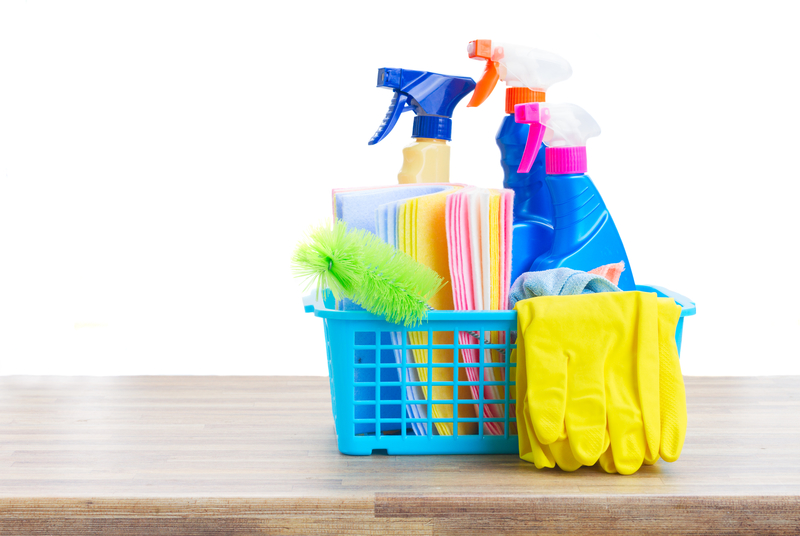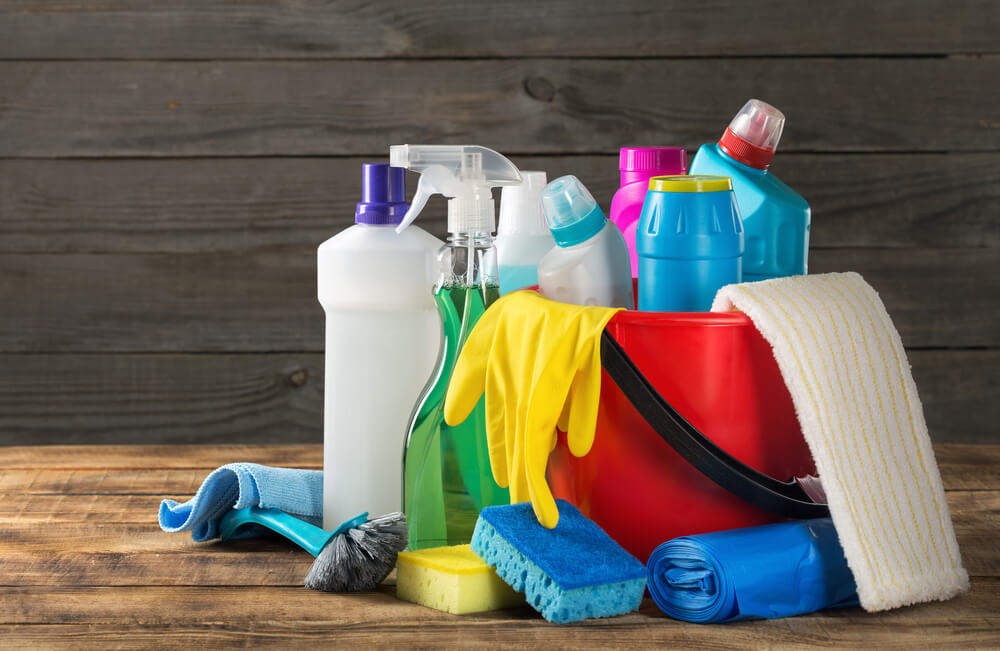The Best Overview to Everyday Cleaning: How to Scrub the Surfaces, Vacuum Carpets, and Clear Out Any Clutter
The Best Overview to Everyday Cleaning: How to Scrub the Surfaces, Vacuum Carpets, and Clear Out Any Clutter
Blog Article
Recognizing the Need for Thoroughly Disinfecting and Sterilizing Regularly Touched Surfaces in High-Traffic Areas
In the realm of public health and safety, the meticulous disinfection and sanitization of regularly touched surface areas in high-traffic locations stand as paramount measures in preventing the spread of damaging microorganisms. By exploring the various facets of surface sanitation, from the dangers connected with neglecting cleansing procedures to the efficient methods that can be employed, a more clear understanding emerges of the important function these practices play in safeguarding public wellness.
Value of Surface Sanitation
Highlighting the complete disinfection of high-traffic surface areas is essential in maintaining a sanitary environment and protecting against the spread of dangerous microorganisms. High-touch surfaces such as door takes care of, light switches, lift buttons, and kitchen counters serve as breeding grounds for microorganisms and viruses. Routine sanitation of these surfaces is imperative to reduce the danger of contamination and transmission of illnesses.
By carrying out a durable disinfection protocol, services and institutions can produce a safer setting for site visitors, employees, and customers. Correct surface disinfection not just alleviates the spread of transmittable diseases but likewise imparts self-confidence in the cleanliness and security of the properties. This aggressive strategy demonstrates a commitment to health and wellness and health, which is specifically vital in high-traffic areas where the probability of direct exposure to virus is enhanced.
In addition, surface disinfection plays a vital duty in total infection control methods. Integrated with hand health techniques, putting on masks, and keeping physical distancing, complete sanitation of high-touch surface areas creates a thorough protection against the transmission of damaging bacteria. Prioritizing surface disinfection is a crucial component of a holistic approach to health and security in shared spaces.
Risks of Neglecting Cleansing Practices
Ignoring complete sanitation of high-traffic surfaces significantly heightens the danger of bacterial and viral contamination, posturing a major hazard to the wellness and security of individuals often visiting these spaces. Failure to apply proper cleaning techniques can cause the build-up and spread of hazardous virus, including viruses and microorganisms, on often touched surfaces such as doorknobs, hand rails, lift buttons, and countertops.

In addition, ignoring the importance of thorough cleansing not only endangers the well-being of individuals but also weakens initiatives to preserve a clean and sanitary environment. It is critical to acknowledge the value of appropriate disinfection methods in stopping the spread of infections and safeguarding public health and wellness.
Effective Sanitation Approaches
To maintain optimal cleanliness and lower the risk of contamination on high-traffic surfaces, employing efficient disinfection techniques is crucial. One of the most efficient and common disinfection approaches is using chemical anti-bacterials.
An additional reliable approach is the usage of UV-C light. UV-C light has been revealed to be efficient in killing a large variety of microbes by disrupting their DNA framework, hence stopping them from reproducing. Nonetheless, it is vital to use UV-C light correctly, guaranteeing that the appropriate find out here intensity and direct exposure time are applied to achieve the wanted sanitation results.
In addition, utilizing steam cleaning as a sanitation approach can be extremely reliable, specifically on surfaces that are heat-resistant. Vapor can penetrate permeable surface areas and eliminate bacteria, viruses, and other microorganisms effectively. When utilizing steam cleaning, it is essential to make sure that the surface reaches the called for temperature for a sufficient quantity of time to guarantee correct disinfection.
Influence On Public Health
The upkeep of high standards of tidiness and sanitation on high-traffic surface areas plays a critical role in safeguarding public health and wellness. Regularly touched surface areas in locations with high tramp, such as doorknobs, hand rails, elevator buttons, and bathroom centers, serve as breeding grounds for unsafe pathogens.
Efficient sanitation practices not just safeguard individuals from falling ill but also add to the overall well-being of culture. Public wellness authorities stress the relevance of keeping clean settings to prevent outbreaks and have the spread of diseases. In high-traffic locations like airports, institutions, healthcare facilities, and public transport systems, the effect of extensive disinfection measures can not be underrated. Focusing on the sanitization of often touched surfaces is a positive method to advertising public health and wellness and useful reference improving the safety of people in common areas.
Applying Regular Cleaning Protocols
Immediately instituting and sticking to a constant timetable of cleaning methods is critical for keeping the cleanliness and safety and security of high-traffic surfaces. Regular cleansing protocols are necessary in avoiding the build-up of bacteria and pathogens on regularly touched surface areas, especially in locations with high foot website traffic. By implementing a systematic approach to cleaning, companies can efficiently minimize the threat of disease transmission and develop a much healthier setting for workers, consumers, and the public.
To develop an efficient cleaning routine, it is crucial to determine high-traffic areas that call for frequent attention. These areas may consist of doorknobs, handrails, elevator switches, bathroom centers, and common tools. Applying a routine cleaning regimen that targets these surfaces several times a day can considerably reduce the spread of unsafe bacteria and viruses.
Furthermore, using suitable cleaner and anti-bacterials is crucial to making certain that surface areas are thoroughly sanitized. Regular training of cleaning staff on proper cleansing methods and the value of adherence to the cleansing routine is likewise important in preserving a sanitary atmosphere. By prioritizing consistent cleaning methods, companies can advertise the wellness and health of people who communicate with these high-traffic surfaces.

Final Thought
In verdict, it is important to prioritize detailed sanitation and sanitization of regularly touched surface areas in high-traffic locations to avoid the spread of damaging microorganisms and preserve public health and wellness. Ignoring appropriate cleansing practices can raise the threat of contamination and transmission of conditions. By executing routine cleaning protocols and using reliable sanitation techniques, we can produce a much safer setting for every person (Clear Out Any Clutter). It is essential to recognize the value of keeping tidy surface areas in high-traffic areas to ensure the health of the area.
In the world of public wellness and security, the meticulous sanitation and sanitization of frequently touched surface areas in high-traffic areas stand as extremely important procedures in avoiding the spread of unsafe microorganisms. By exploring the different elements of surface area sanitation, from the risks associated with overlooking cleaning methods to the effective techniques that can be Continue employed, a clearer understanding arises of the vital function these practices play in protecting public health.Additionally, utilizing steam cleaning as a sanitation approach can be extremely effective, particularly on surface areas that are heat-resistant. When using heavy steam cleansing, it is important to make certain that the surface gets to the called for temperature for a sufficient quantity of time to ensure proper sanitation.
In verdict, it is essential to prioritize detailed disinfection and sanitization of frequently touched surface areas in high-traffic locations to protect against the spread of damaging microorganisms and preserve public wellness.
Report this page